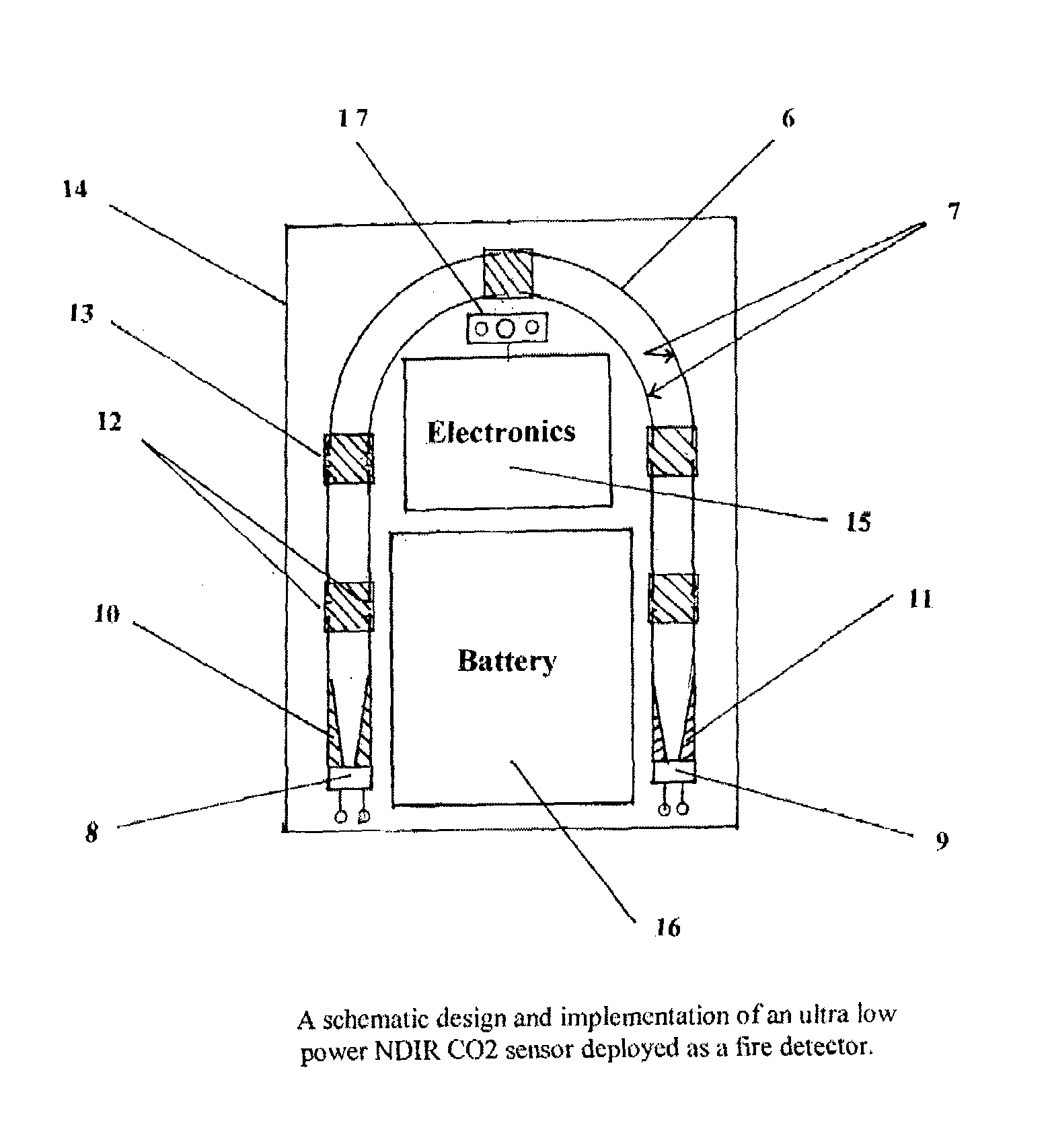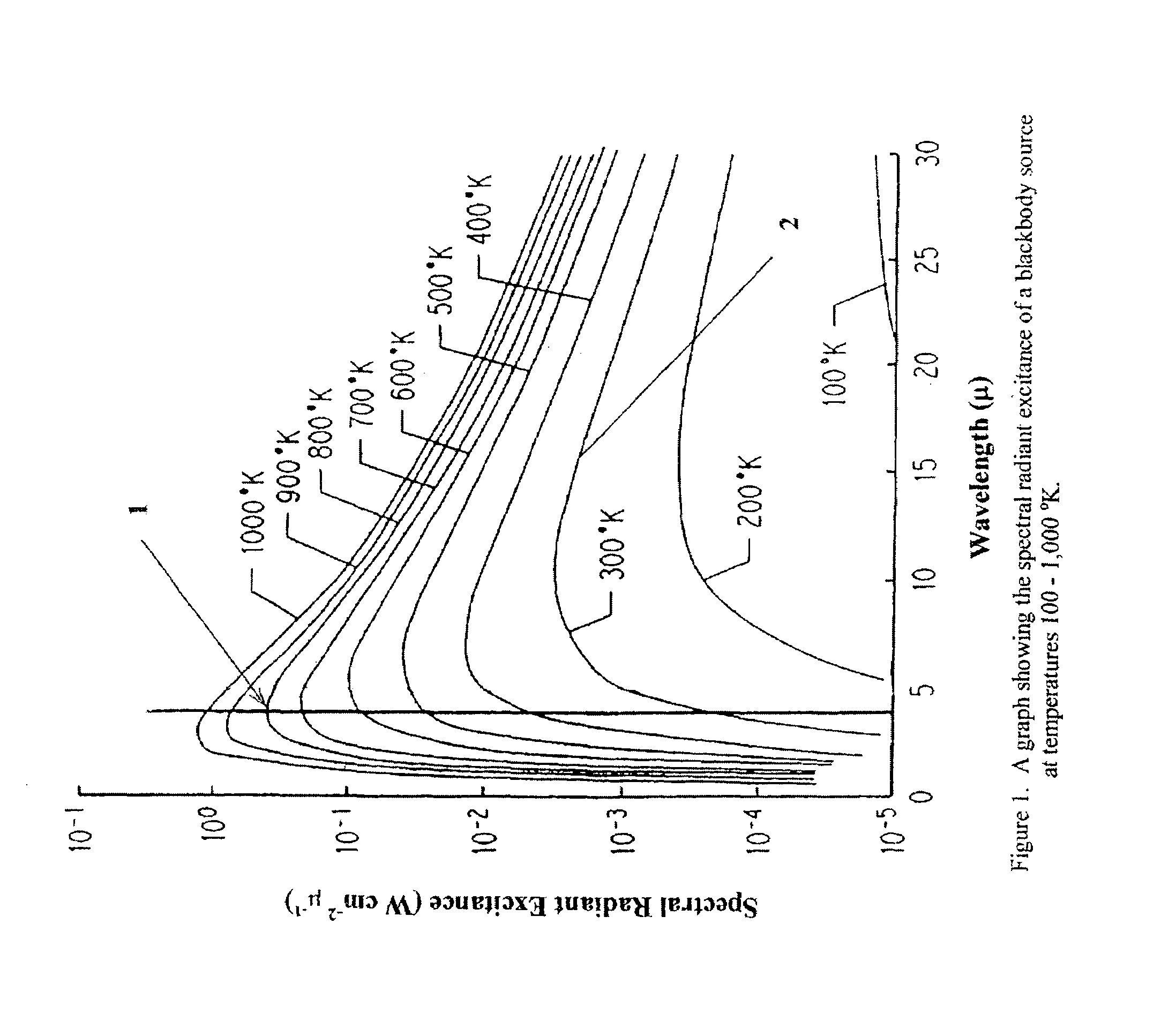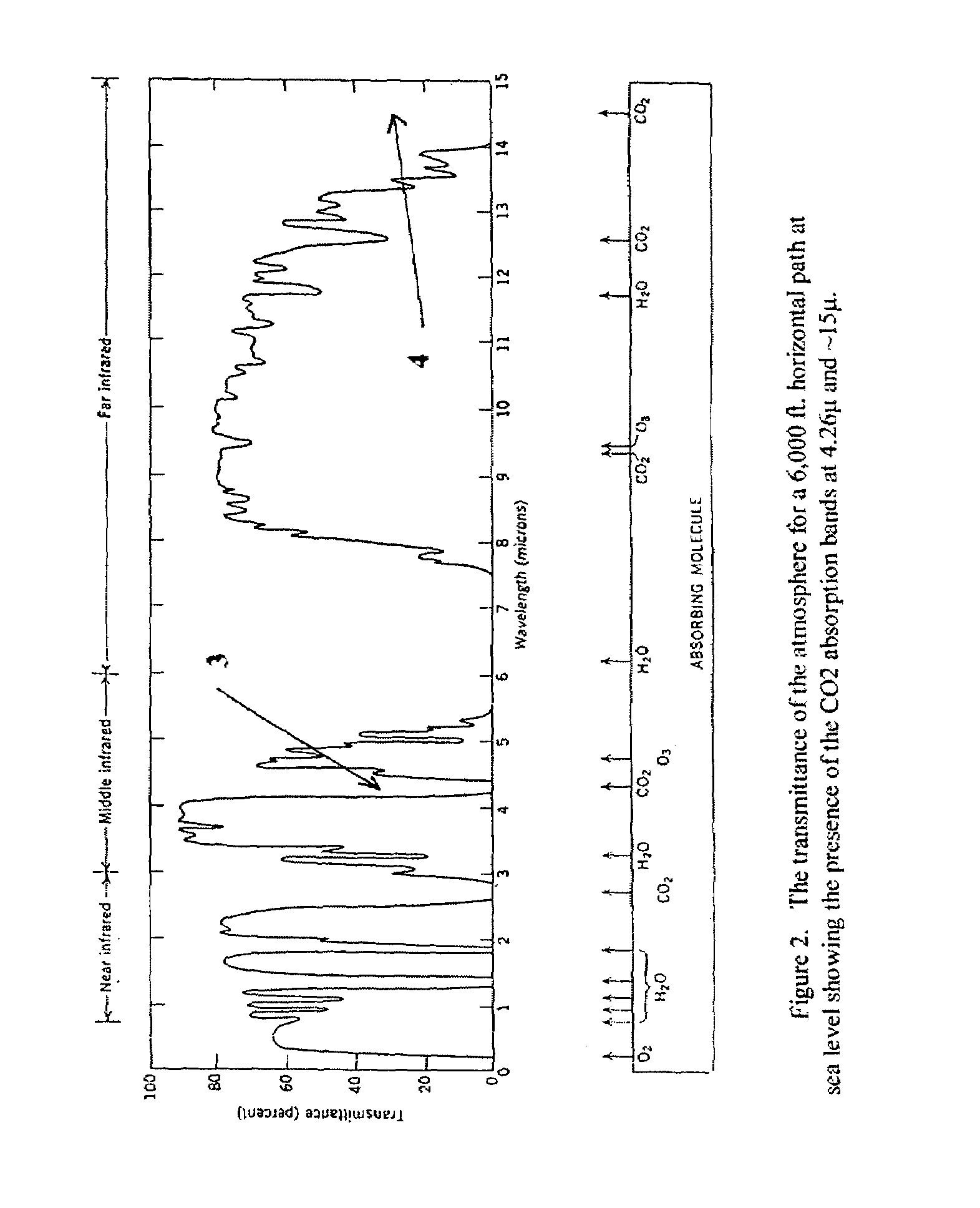Ultra low power NDIR carbon dioxide sensor fire detector
a carbon dioxide sensor, ultra-low power technology, applied in the field of gas analysis, can solve the problems of high power consumption, high implementation cost, and inability to take advantage of ndir techniques, and achieve the effects of reducing power consumption, reducing cost, and reducing cos
- Summary
- Abstract
- Description
- Claims
- Application Information
AI Technical Summary
Benefits of technology
Problems solved by technology
Method used
Image
Examples
Embodiment Construction
[0029]Over the past three decades, the design of NDIR CO2 gas sensors has invariably used the strong CO2 absorption band at 4.26μ infrared. This band is not only strong, it is also very specific. In other words, no other gases, other than some extremely weak water vapor absorption continuum, have absorption bands within it. Thus, interferences caused by the presence of other gases to the CO2 measurement are virtually nonexistent. In accordance with the conventional wisdom of NDIR sensor design, the most optimum infrared source to use for CO2 detection should have a blackbody temperature at around 800–900° K., which has its peak spectral radiant excitance located at around 4.26μ according to Planck's Radiation Law. Because of the facts mentioned above, NDIR CO2 sensors are not difficult to design and they were among the earliest NDIR gas sensors manufactured and available for sale to the public circa around mid 1950's. However, the use of a high temperature infrared source for the de...
PUM
 Login to View More
Login to View More Abstract
Description
Claims
Application Information
 Login to View More
Login to View More - R&D
- Intellectual Property
- Life Sciences
- Materials
- Tech Scout
- Unparalleled Data Quality
- Higher Quality Content
- 60% Fewer Hallucinations
Browse by: Latest US Patents, China's latest patents, Technical Efficacy Thesaurus, Application Domain, Technology Topic, Popular Technical Reports.
© 2025 PatSnap. All rights reserved.Legal|Privacy policy|Modern Slavery Act Transparency Statement|Sitemap|About US| Contact US: help@patsnap.com



